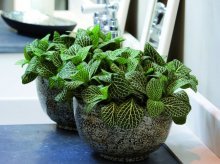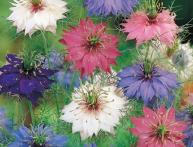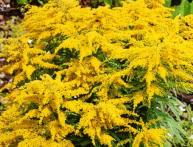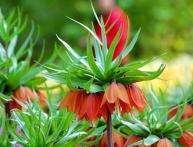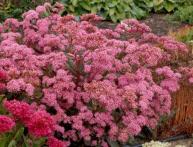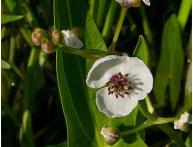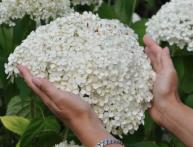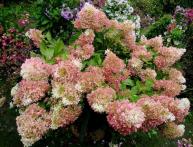Shade-tolerant indoor plants: popular types and their descriptions
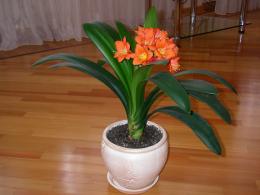
Many indoor plants need light to grow and develop well. Some plants do well in the shade. These are the so-called shade-tolerant or shade-loving flowers. They are most often placed on northern windows. Each plant needs certain conditions. Beginning gardeners should know this.
Content:
- Main types of shade-tolerant plants
- Tradescantia: description and characteristics of the plant
- Clivia: description of a flowering plant
- Spathiphyllum: plant characteristics
- Calathea: description and varieties
- Fittonia: description of a houseplant
Main types of shade-tolerant plants
Shade-tolerant plants, even with a lack of lighting, do not lose their decorative properties. In order for them to fully develop, they need to be placed in a bright place from time to time, avoiding direct sunlight. There are the following varieties of indoor plants that can grow in the shade:
- Curly
- Blooming
- Deciduous
By using vine or climbing flowers can be used to decorate a cabinet, bookcase, or wall. Popular types of climbing plants are:
- Ivy
- Scindapsus
- Tradescantia
- Creeping Calisia
- Epipremnum
- Philodendron climbing
- Peperomia
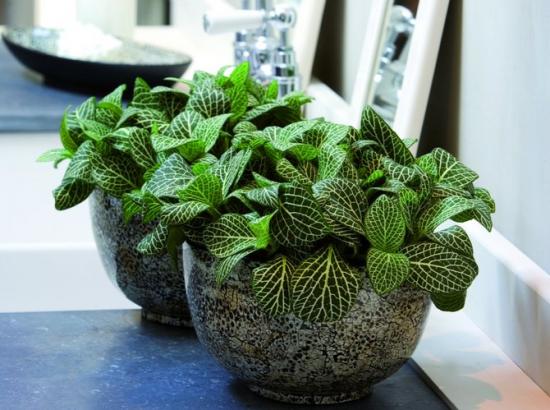
A large number of indoor flowering plants can grow in the corner of the room or on northern windows. Flowering of shade-tolerant plants occurs in partial shade. In full shade, plants do not bloom or very little flowering is observed.Among the beautifully flowering plants that grow well in the shade, the following species can be distinguished:
- Anthurium
- Clivia
- Vriesia
- Begonia
- Spathiphyllum
- Gardenia
- Saintpaulia
Such plants should be placed on the eastern or western part of the window. To decorate a window sill or balcony with beautiful and luxurious flowers, you need to create favorable conditions for them. Decorative foliage plants will help smooth out sharp corners or completely close them. There are a large number of deciduous houseplants that vary in leaf size, shape and shade.
Common foliage houseplants:
- Aucuba
- Calathea
- Maranta
- Nephrolepis
- Aglaonema
- Fittonia
- Maidenhair
When choosing such plants for shaded areas, it should be taken into account that flowers with white-green leaves require more lighting than plants with bright green leaves.
Tradescantia: description and characteristics of the plant
This is perennial liana, which belongs to the Commelinaceae family. A low plant with creeping and sometimes straight shoots. The plant is made decorative by bright green shoots that hang in a thick cascade. The leaves have parallel veins. Depending on the species, the leaves can have different colors: green, painted with purple, white, yellow stripes.
Common varieties of indoor Tradescantia: striped, riverine, white-flowered, virginian, hairy, etc. Tradescantia looks good in pots, cache-pots or hanging baskets. To maintain the decorative appearance of the plant, it is necessary to spray, water and feed. Tradescantia is often used as an ampelous and ground cover plant.
Clivia: description of a flowering plant
Clivia is an indoor flowering plant that belongs to the Amaryllis family. The plant does not have a bulb. Instead, the flower has a thick rhizome. The plant has no stem. The leaves are paired, dark green in color and shaped like a sword. They can reach 70 cm in length, but grow very slowly.
The following types of indoor clivias are found:
- Clivia beautiful (light red flowers)
- Clivia nobilis (red flowers)
- Clivia variegata (yellow, white, dark red flowers)
- Clivia cinnabar (red flowers with a yellowish tint)
In spring, a peduncle is formed in the form of an arrow, which is 20-40 cm long. This arrow has about 30 buds that form a lush umbrella. The flowers are bell-shaped and their diameter is 15-20 cm. The buds bloom sequentially. This is a poisonous plant, so it is not recommended to place it on window sills in a child’s room, or in places where pets can climb.
Spathiphyllum: plant characteristics
Spathiphyllum – perennial ornamental plant of the Araceae family. This plant does not have a stem, but has a short rhizome from which leaves grow. A flower in the form of a spadix, which is surrounded by a white blanket.
Occasionally you can see green blotches on them. Flowering occurs in spring and lasts about 3-4 weeks.
The leaves grow from a rhizome, oval or lanceolate in shape with a vein in the middle. They are 30-40 cm in length. These plants are quite popular among gardeners not only because of the beauty of the leaves, but also of the flower. In addition, spathiphyllum does not require care.
Calathea: description and varieties
Calathea is a perennial plant of the Marantaceae family. The plant can reach 85 cm in length.The shoots are underground, the leaves are oblong, about 30 cm long. The color of the leaves is emerald, they have stripes, spots and other patterns. The shade of the leaves can be different: amber, bloody, brown, purple. Varieties calathea:
- Crocata
- Makoya
- Medallion
- Zebrina
- Lansifolia
- Saffron
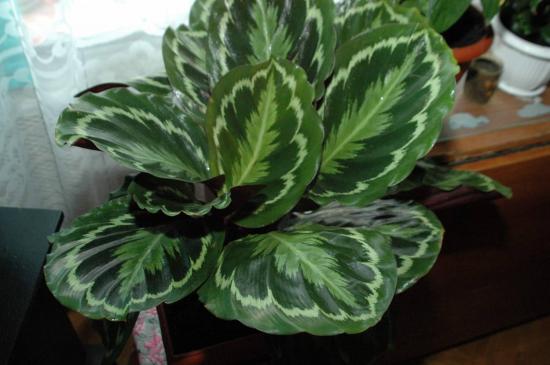
Unlike other plants, calathea leaves rise slightly in the evening and fall down in the morning. If you observe the plant, you will notice this amazing feature.
Fittonia: description of a houseplant
Fittonia is a houseplant of the Acanthus family, attractive with its patterned leaves. This is an ornamental perennial plant that can decorate any room. The stems of the plant are brown and thin, but dense. The oval leaves have white, pink and red veins. The flowers of the plant are small and inconspicuous, yellowish in color.
Depending on the type of Fittonia, the leaves can have a variety of shades: green, pink, purple, white, red, etc. When growing Fittonia, it is necessary to create optimal conditions for the plant. The room temperature should be about 22-25 degrees. If the reading is below 18 degrees, the plants will begin to shed their leaves. This plant is quite complex grow at home, as it needs high air humidity.
Video about a beautiful indoor flower - Fittonia:

